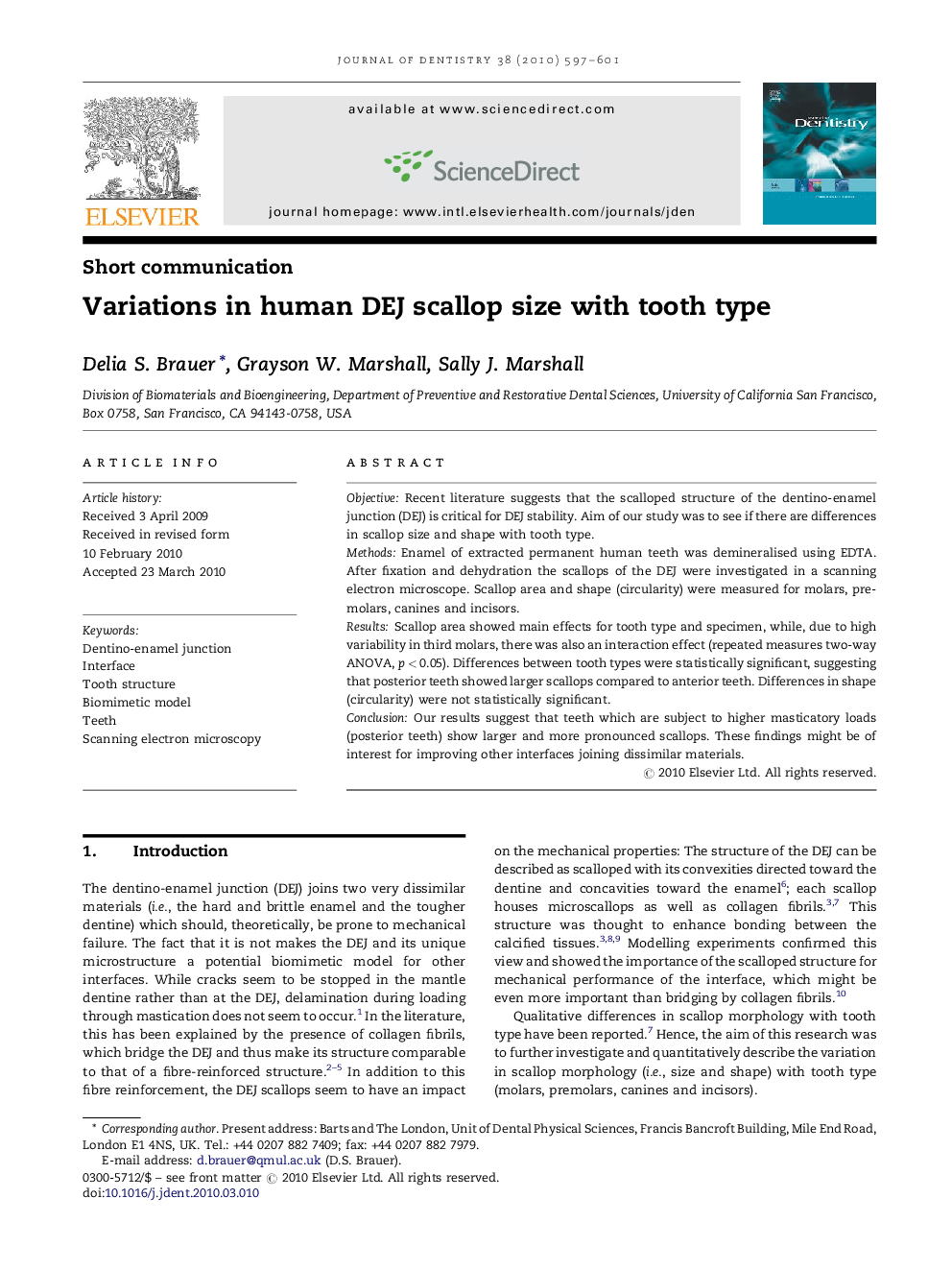| Article ID | Journal | Published Year | Pages | File Type |
|---|---|---|---|---|
| 3146081 | Journal of Dentistry | 2010 | 5 Pages |
ObjectiveRecent literature suggests that the scalloped structure of the dentino-enamel junction (DEJ) is critical for DEJ stability. Aim of our study was to see if there are differences in scallop size and shape with tooth type.MethodsEnamel of extracted permanent human teeth was demineralised using EDTA. After fixation and dehydration the scallops of the DEJ were investigated in a scanning electron microscope. Scallop area and shape (circularity) were measured for molars, premolars, canines and incisors.ResultsScallop area showed main effects for tooth type and specimen, while, due to high variability in third molars, there was also an interaction effect (repeated measures two-way ANOVA, p < 0.05). Differences between tooth types were statistically significant, suggesting that posterior teeth showed larger scallops compared to anterior teeth. Differences in shape (circularity) were not statistically significant.ConclusionOur results suggest that teeth which are subject to higher masticatory loads (posterior teeth) show larger and more pronounced scallops. These findings might be of interest for improving other interfaces joining dissimilar materials.
